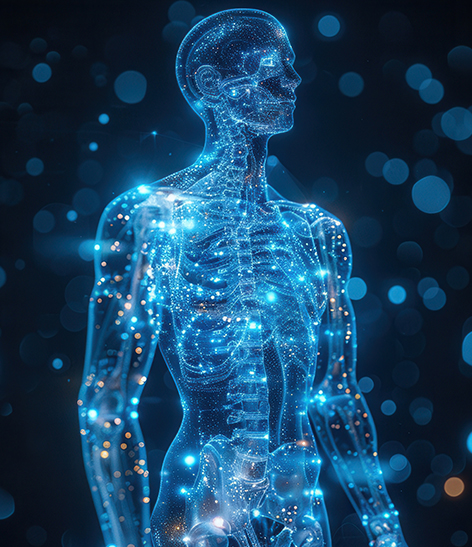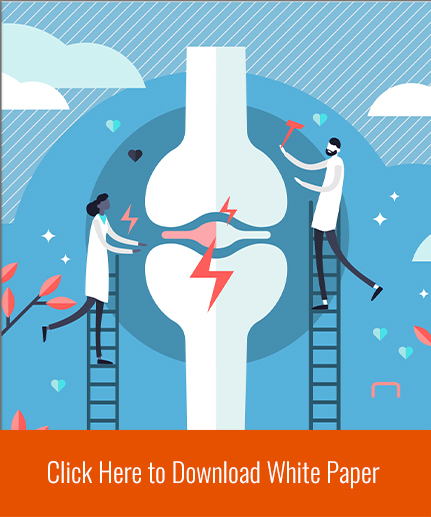Free Case Evaluation

Treatment Options for CRPS
How is complex regional pain syndrome treated?
Complex regional pain syndrome (CRPS) is one of the most difficult pain conditions to treat. It affects nerves, blood flow, skin, immune response, and many other body systems all at once. Because of this, there is no “one-size-fits-all” cure. What we do know is that the sooner treatment begins, and the more types of treatment you use together, the better your chances of improvement. Below, we walk you through the main treatment options (medical, physical, psychological, and interventional) and what research says about each. We’ll also cover the risks, trade-offs, and realistic expectations.
Free Case Evaluation
TABLE OF CONTENTS
- What are the goals of treatment for CRPS?
- Why is early and aggressive treatment so important?
- What are the non-surgical treatments for CRPS?
- What are the interventional treatments for CRPS?
- What are the psychological and supportive therapies for CRPS?
- What are some emerging or alternative therapies for CRPS?
- What the research says – what works best and what doesn’t
- What are the risks and trade-offs of CRPS treatment?
- Multidisciplinary and coordinated care is best
- Working with the CRPS Law Firm
- What treatment combinations might look like
What are the goals of treatment for CRPS?
Before talking details, it helps to understand what the treatment is trying to do. For most people, treatment of CRPS aims to:
- Reduce or manage pain.
- Improve function: being able to move, use the limb, and do daily tasks.
- Prevent or reverse damage (skin changes, muscle wasting, joint stiffness).
- Minimize flare-ups and spread of symptoms.
- Improve quality of life, including emotional, psychological, and social well-being.
Because CRPS is often chronic (long-lasting), treatment usually means ongoing care rather than a single cure. Treatment must be personalized.
Why is early and aggressive treatment so important?
Many studies and clinical guidelines stress that early treatment (often within weeks to a few months of symptom onset) produces better results. Delaying treatment can let changes become more fixed, and skin, bone, or nerve damage become harder to reverse.
If you or a loved one suspects CRPS, don’t wait. Seek medical care quickly, track symptoms, and push for a multidisciplinary approach. The more aggressive and coordinated the treatment is early on, the less likely it is to result in severe long-term disability.
What are the non-surgical treatments for CRPS?
Non-surgical and conservative treatments are usually the first steps in dealing with CRPS. They tend to have fewer risks, and many patients respond well, especially if the disease is in an early stage.
Physical rehabilitation
Physical rehabilitation and therapy. Physical therapy (PT) and occupational therapy (OT) can help restore movement, reduce swelling, maintain or increase range of motion, and prevent contractures (when the joints stiffen permanently). Therapists who understand CRPS will guide you so you don’t push too hard, which can worsen your symptoms.
Desensitization/sensory retraining. These include techniques using different textures, temperatures, and touch to gradually reduce sensitivity (allodynia or hyperalgesia). Over time, the nervous system may stop overreacting.
Mirror therapy and graded motor imagery. This involves using mirrors or imagery to trick the brain into perceiving movement without pain, then gradually working up to real movement. These approaches help with pain and can improve function.
Gentle exercise. Low-impact exercises, aerobic activity, gentle stretching, and gradual strength work are often helpful in coping with CRPS. Moving the limb helps with blood flow, circulation, and preventing atrophy.
Desensitization plus stress loading. Some therapy programs might include “scrubbing” or “carrying” (light-weight bearing) to gradually stimulate the large sensory nerve fibers in a more controlled way.
Medications
Medications are often used alongside therapy. They don’t always relieve pain completely, but can reduce symptoms and enable participation in therapy. The following are some of the medications used for CRPS symptoms.
- Bisphosphonates
- Corticosteroids
- Anticonvulsants/neuropathic pain drugs
- NSAIDs and COX-2 inhibitors
- Ketamine (IV or low-dose)
- Other medications, like topical agents (lidocaine patches)
What are the interventional treatments for CRPS?
When conservative treatments and medications aren’t enough, especially for more severe or chronic CRPS, interventional or more invasive options may be considered. These carry more risk but sometimes offer relief:
- Sympathetic nerve blocks. Local anesthetic injections around the sympathetic nerves are sometimes effective to temporarily reduce pain and give a chance for other treatments. The evidence here is mixed, and it may be more helpful in the early stages of CRPS.
- Epidural or intrathecal infusions. These involve delivering medication (like local anesthetics, opioids, or others) close to the spinal cord through a catheter or pump. They can help with severe pain that doesn’t respond to other means.
- Spinal cord stimulation. These are implanted devices that send electrical signals to interfere with pain signals traveling to the brain. Some patients see relief. These are more invasive and costly, but may be an option where available.
- Intrathecal drug pumps. For certain types of pain and motor dysfunction, including dystonia or spasms, drug pumps may be helpful.
- This involves severing or disabling parts of the sympathetic nervous system. The risks here are significant and are usually reserved for stubborn cases.
What are the psychological and supportive therapies for CRPS?
Treating CRPS involves more than just medicine and procedure. Because pain is experienced in the brain and mind, psychological care is often important:
- Cognitive behavioral therapy (CBT) and counseling can help cope with pain, set realistic expectations, and manage anxiety, depression, or fear. CBT can also improve participation in physical therapy.
- Learning about how nerves work, what pain signifies, what is likely permanent versus what may improve, helps reduce catastrophizing (thinking of the worst case scenario) and fear avoidance.
- Relaxation techniques, mindfulness, and biofeedback are all methods to reduce stress, which can worsen CRPS symptoms. Techniques like deep breathing, guided imagery, and biofeedback may help.

What are some emerging or alternative therapies for CRPS?
Some treatments are newer, less well-studied, or used off-label. They may not be widely available, but they can give hope in difficult cases. These include:
- Some studies show a benefit from NMDA receptor antagonists, newer immune-modulating agents, and experimental treatments.
- Topical treatments and physical modalities, like lidocaine patches, creams, capsaicin, transcutaneous electrical nerve stimulation (TENS), lasers, and electromagnetic field therapy, can all help ease the symptoms of CRPS.
- Mirror therapy and virtual reality can neurally retrain how the brain perceives the affected limb. This is a promising therapy, especially for sensory mismatch and pain.
What the research says – what works best and what doesn’t
Because the evidence for many therapies is mixed, it’s helpful to understand which has better support.
- Bisphosphonates appear among the stronger pharmaceutical treatments in clinical trials for CRPS I. A systematic review found good evidence for pain reduction with these medications.
- Short courses of corticosteroids, especially early on, show benefit in reducing pain, inflammation, and improving function.
- Evidence for IV or other forms of ketamine is growing, and it seems to help patients who haven’t responded to simpler treatments. However, side effects, monitoring, and patient selection are important.
- PT and OT, as well as graded movement and mirror therapies, are generally agreed upon as essential parts of care. These often have a lower risk and help with long-term function.
Some treatments, while popular in practice, have less or lower-quality evidence supporting them. Because of this, insurance companies may question coverage. Also, when therapies are invasive (like nerve blocks, pumps, and other devices), the risks and costs are higher. These types of treatments are often reserved for patients who don’t adequately respond to more conservative therapies.
What are the risks and trade-offs of CRPS treatment?
It’s important to have realistic expectations: many treatments reduce some pain but may not eliminate all symptoms. Some treatments may carry risks or side effects. Here are things to consider:
- Side effects of medications: steroids can cause weight gain, mood changes, and immune suppression; ketamine can cause hallucinations or other neurological side effects; medications like anticonvulsants may cause dizziness or sedation.
- Pain flares: Sometimes therapy causes temporary increases in pain. Good clinicians build in pacing and close follow‑up.
- Invasive treatment risks: Implantable devices (pumps, stimulators) risk infection, surgical complications, and device malfunction.
- Costs and coverage: Many therapies are off-label or newer; insurance may not approve them. Up-front costs, travel, or out-of-pocket expenses may be required.
- Long-term commitment: Many treatments must be continuous or repeated. This includes physical therapy, psychological support, sometimes medications, or device maintenance.
Multidisciplinary and coordinated care is best
Because CRPS affects many systems, the best outcomes usually come when different specialists work together:
- Pain medicine specialists.
- Physical/occupational therapists familiar with CRPS.
- Neurology or physiatry (rehabilitation medicine).
- Psychological/psychiatric support.
- Sometimes vascular specialists, orthopedic surgery, and wound care depending on symptoms.
Having a team ensures that all aspects of the disease are addressed: pain, mobility, nerves, mental health, and daily function.
Working with the CRPS Law Firm
Here are some practical suggestions that can help you maximize your treatment outcomes.
First, act early and push for documentation. The sooner treatment begins, especially during the early phase of symptoms, the better the chance to slow or stop the progression of CRPS. Also, keep detailed medical records, therapy notes, and photos. These are important both medically and legally.
Start with conservative treatments and medications. Before jumping to more invasive options, make sure you’ve tried physical therapy, graded desensitization, appropriate medications, and psychosocial support. If after a few weeks or months, there’s no functional improvement, consider referring to a specialist or pain center with more advanced treatment options.
For nerve blocks, implants, pumps, etc., ensure that your provider has experience, that you understand the possible side effects, and that all less invasive treatment options have been exhausted.
With CRPS, overtreatment can backfire. Therapy should be paced, tolerable, and shouldn’t cause any large flare-ups that can delay your recovery.
Don’t forget to include psychological and emotional care. Pain changes everything: sleep, mood, self-image, and daily life. Working with counselors or psychologists can make other treatments more effective.
Finally, stay informed about new treatments. Research is always continuing, and some new treatments have shown promise. So, working with providers who keep up with medical literature matters.
What treatment combinations might look like
To bring these options to life, here are simplified “case skeletons” showing how diverse treatment pathways may work. (Remember, these are illustrative and not medical advice.)
Case A: Early CRPS after wrist fracture
- Week 1–2: recognition of abnormal pain, swelling, redness. Begin physical therapy for gentle movement. OTC NSAIDs.
- Weeks 2–4: oral corticosteroids prescribed for a short course. Mirror therapy added. Pain diaries and photos taken.
- Month 2–3: bisphosphonate therapy considered if bone signs or severe pain. More intensive OT/PT. Psychological support begins.
- Month 4+: adjust medication (maybe add gabapentin if neuropathic pain). If symptoms are still severe, consider nerve block or neuromodulation referral.
Case B: More chronic or resistant CRPS
- Initial conservative therapy and medications (NSAIDs, anticonvulsants).
- Ongoing psychological support.
- If limited relief: try ketamine infusion under specialist monitoring.
- Consider spinal cord or dorsal root ganglion stimulation.
- Pain pump or intrathecal medications if motor dysfunction or dystonia present.
- Long-term PT/OT to maintain whatever function remains, manage pain fluctuations, preserve skin health, and joint mobility.
If you or a loved one is living with CRPS, don’t settle for suffering in silence. Let the CRPS Law Firm help you understand not only your medical options, but also your rights. We can assist in making sure medical providers take the treatment seriously, help coordinate expert medical opinions, and ensure your story is documented, as medical evidence is often central in legal claims. Call or contact us today for a free consultation. We believe in combining compassion and professionalism to help you get the treatment and justice you deserve.

